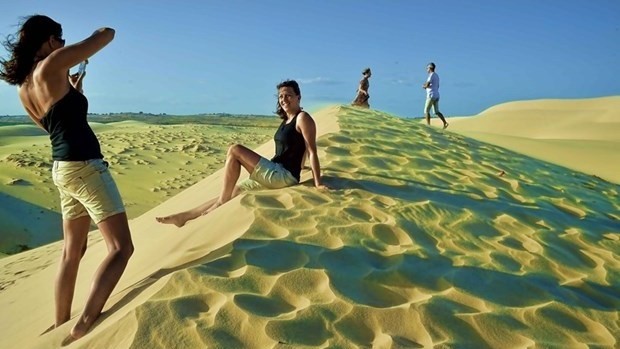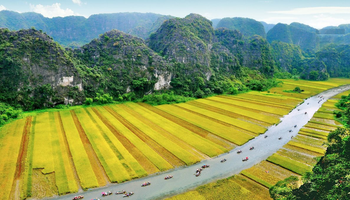The tourism sector has been coordinating with the relevant ministries, sectors and localities to develop plans to welcome foreign tourists once again when it is allowed.
Director General of the Vietnam National Administration of Tourism. Nguyen Trung Khanh, said that Vietnam has earned international praise as one of countries which has successfully supressed the COVID-19 epidemic. Therefore, the tourism sector has taken advantage of the positive effects of media communications, raising Vietnam’s position and promoting the country as a safe and attractive destination.
This viewpoint also received much agreement from participants at a seminar recently held in Hanoi to rejuvenate tourism and resuscitate the international tourism market post–COVID 19.
With the low number of confirmed COVID-19 cases and no deaths reported so far, if Vietnam can figure out the right time to reopen its doors to foreign holidaymakers, it will have a competitive advantage compared to other countries in the region that are still implementing severe societal restrictions..
As foreign tourists need to take time to search for information and prepare documents before making their decision, it is time for Vietnam to promote a communication and digital marketing campaign to advertise itself as a safe destination.
To spread the message, widely close between the State, tourism organisations and businesses is needed. It is also necessary to design supportive policies to help travel businesses, particularly airlines, resume their operations.
According to Kenneth Atkinson, vice president of the Tourism Advisory Board (TAB), international travellers visit Vietnam only when they are provided with safe services, something which also helps to eliminate the risk of community transmission of COVID-19.
Safety criteria must not only be set for the operation of tours but also for the selection of foreign tourists from safe markets. This requires the tourism sector to coordinate with the ministries of foreign affairs, public security, and health in order to select countries and territories that have contained the coronavirus pandemic.
The Vietnam National Administration of Tourism (VNAT) is preparing various scenarios to re-welcome foreign tourists. In a case where the pandemic is contained by September in some key source markets, VNAT will propose relaxing restrictions and the re-launch of promotions to attract visitors from these markets. If this happens, Southeast and Northeast Asia will be the first markets to be targeted by the VNAT.
In a case where the pandemic lasts until the end of the year, VNAT will consider other options in light of the world’s prevailing situation.
Several experts have suggested that Vietnam needs to develop standards to certify the health condition of individuals wishing to visit Vietnam in order to create a safe tourism corridor amid the ongoing threat of COVID-19 spreading.
















